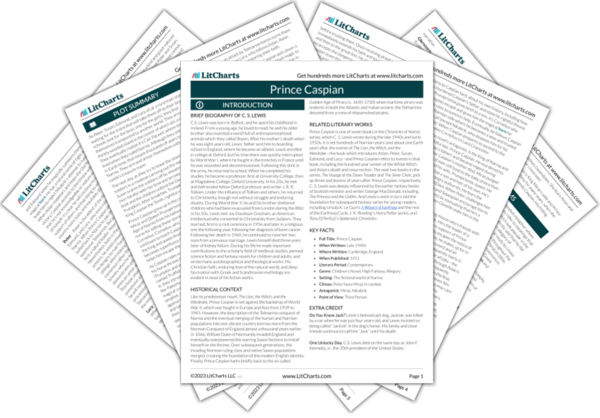Aslan exhibits tenderness on his “holiday” through the countryside, but he also demonstrates his power, like when he effortlessly tosses the cottage to the wind. He comes to restore Narnia, but restoring good where evil has reigned for so long requires breaking some things, despite the gentleness of the revolution. When Bacchus dips his pitcher into the well and brings the old woman rich wine, this recalls the story of Jesus Christ’s first miracle in the Christian Bible, where he turned water into wine at a wedding (John 2:1-11). It also suggests the Christian communion, in which believers share bread and wine in memory of Jesus’s death and resurrection, and also as an important act of community.


